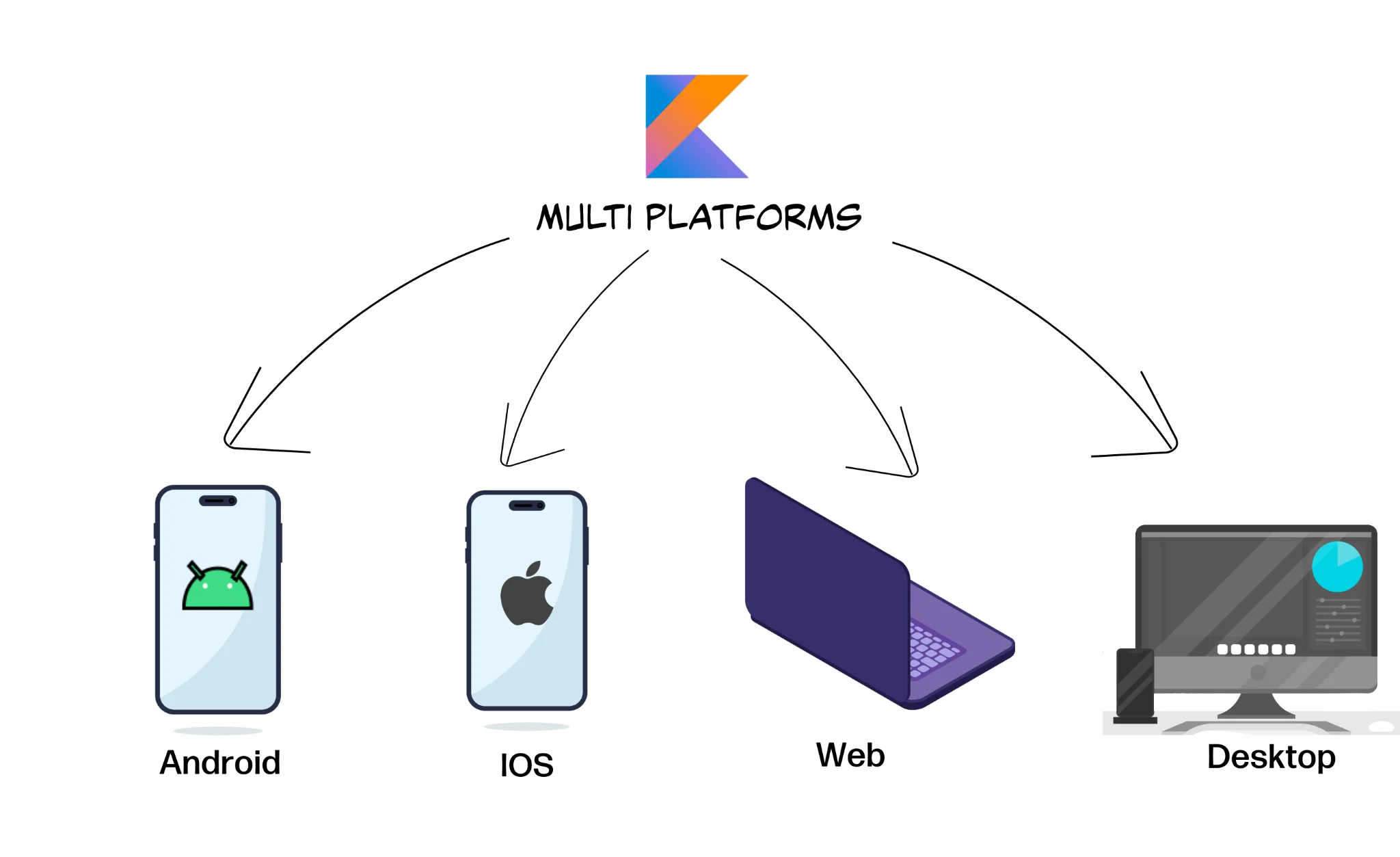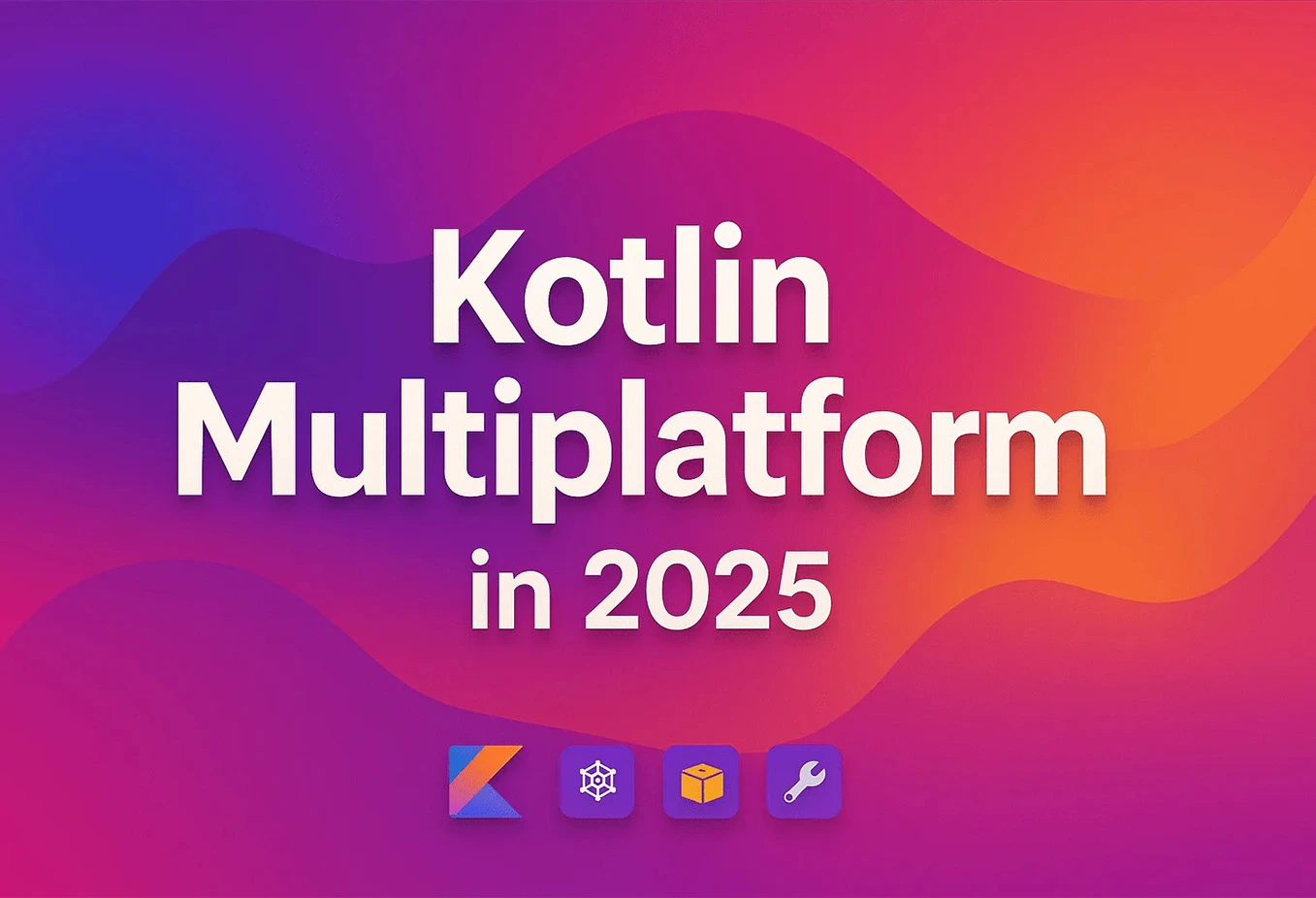
Written By
Dimalsha Perera
Software Engineer Intern (Mobile)
Cross-platform development has always been about one thing: maximising reach while minimising duplicated effort. Over the years, developers have experimented with different solutions from hybrid apps with WebViews to frameworks like React Native and Flutter. But in 2025, one technology is quietly reshaping how teams approach cross-platform work: Kotlin Multiplatform (KMP).
What is Kotlin Multiplatform?
Kotlin Multiplatform (KMP) is JetBrains’ answer to cross-platform development.
Unlike frameworks that replace native stacks, KMP takes a “shared logic, native UI” approach. It lets you write core business logic, networking, and data handling in shared Kotlin code, while still allowing each platform (Android, iOS, desktop, or web) to have native UI layers.
This makes KMP unique. Instead of forcing you to abandon platform specific capabilities, it encourages reuse where it makes sense and complete native control where it matters.

The State of KMP in 2025
Kotlin Multiplatform has come a long way from its experimental beginnings, and by 2025, it stands as a mature, production-ready solution. Some of the most notable developments include:
- Stable Release: Kotlin Multiplatform reached full stability in late 2023, and by 2025 it’s widely adopted across startups and enterprise projects.
- Tooling Improvements: With JetBrains’ investments in IntelliJ IDEA and Android Studio plugins, developer experience is smoother than ever.
- Compose Multiplatform: Jetpack Compose now works reliably across Android, iOS, desktop, and web with KMP at its core, making the idea of building a single adaptive UI for multiple platforms closer to reality.
- Ecosystem Growth: Widely used libraries such as Ktor, SQLDelight, and Koin/Hilt now ship with robust multiplatform support, giving developers confidence to build real-world apps without compromise.
- Enterprise Migration: More organisations are moving away from entirely separate Android and iOS codebases, adopting KMP modules to share logic and cut long-term maintenance costs.
Key Highlights and Trends in 2025
- Google’s official endorsement and industry adaption: Major companies like Shopify, Forbes, and Zürcher Kantonalbank now run Kotlin Multiplatform in production. Google officially endorsed it at I/O 2024 as their recommended approach for sharing business logic between Android and iOS apps.
- Better Development Tools: KMP works seamlessly in Android Studio and IntelliJ IDEA. JetBrains is also building a dedicated KMP IDE to make cross-platform development smoother.
- Stable UI Development Compose Multiplatform for iOS becomes production ready in 2025. This means developers can build shared interfaces that look native to each platform.
- Cleaner iOS Integration The new Kotlin-to-Swift export feature provides clean Swift APIs instead of clunky Objective-C bridges. Popular libraries like Ktor and SQLDelight continue improving with better documentation.
- More straightforward Project Setup Gradle integration improves, making dependency management and library publishing less complicated. New declarative build configurations will reduce setup complexity.
- Why It Matters for Business: Unlike other cross-platform solutions, KMP lets you start small and gradually share more code. You don’t need to rewrite your entire app. This means fewer bugs, less duplicate code, and lower maintenance costs. For companies building serious applications, it’s becoming a strong competitor to Flutter and React Native.
Challenges That Remain
Even with all its progress, Kotlin Multiplatform isn’t without hurdles in 2025
- Learning Curve for iOS Developers: Kotlin feels different from Swift, meaning iOS engineers still face an adjustment period.
- Ecosystem Gaps: While the library ecosystem is expanding quickly, niche or highly specialised libraries haven’t yet caught up with full KMP support.
- Team Adoption: Moving from a separate Android and iOS team model to a shared Kotlin codebase requires technical changes and a cultural shift within organisations.
The Future of KMP
Looking forward, Kotlin Multiplatform will become the default way to build cross-platform applications where performance and native experiences matter.
With Compose Multiplatform becoming mainstream, KMP might eventually bridge business logic and entire app experiences across platforms.
For companies in 2025, Kotlin Multiplatform offers a practical balance,
- The productivity of cross-platform development
- Without sacrificing the polish of native apps.

